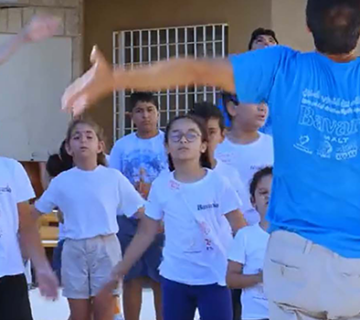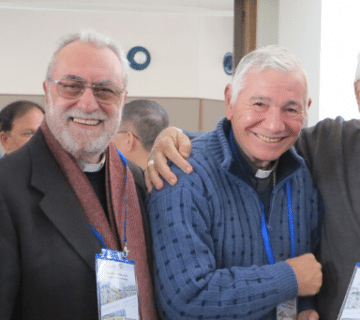 The República Oriental del Uruguay, its official name, has three and a half million people and is one of several smaller countries on the continent between two giants: Argentina and Brazil.
The República Oriental del Uruguay, its official name, has three and a half million people and is one of several smaller countries on the continent between two giants: Argentina and Brazil.
Its name comes from the river Uruguay – ‘river of painted birds’ in Guaraní – which forms its Western border. It has rolling countryside, vast meadows, wide expanses furrowed by water courses and a huge oceanic coast with stunningly beautiful beaches. A tranquil land, with hospitable people who have welcomed with open arms various waves of immigrants – from Italy and Spain, but also less numerous groups from Germany, France, Switzerland and Africa. All have felt at home and mixed harmoniously with the other inhabitants.
Uruguayans are friendly, respectful and naturally on the side of others. They are gifted with a strong critical sense: they love debates, lectures, art and football (a real national passion) and are deeply attached to their families and their friends. They have a strong democratic tradition.
 The capital, Montevideo, was built in 1726. Today the city is still small enough to be comfortable and about 40% of the country’s population live in it. This is where, at the end of the 50s, Fr Pedro Richards, the founder of the Christian Family Movement, invited Chiara Lubich, whom he had met in Rome, to take part in a general assembly of his movement. Chiara was unable to come but in her place she sent Marco Tecilla, the first focolarino, at that time in Brazil. On 12 January 1959 Marco found himself telling the story of the beginning of the Focolare to the assembly. Among the people present was Guillermo Piñeyro who became the first Uruguayan member of the Focolare Movement.
The capital, Montevideo, was built in 1726. Today the city is still small enough to be comfortable and about 40% of the country’s population live in it. This is where, at the end of the 50s, Fr Pedro Richards, the founder of the Christian Family Movement, invited Chiara Lubich, whom he had met in Rome, to take part in a general assembly of his movement. Chiara was unable to come but in her place she sent Marco Tecilla, the first focolarino, at that time in Brazil. On 12 January 1959 Marco found himself telling the story of the beginning of the Focolare to the assembly. Among the people present was Guillermo Piñeyro who became the first Uruguayan member of the Focolare Movement.
Marco went back in the April of that year and brought with him with Lia Brunet, a focolarina from the first group in Trent in Italy. In 1963 the first focolare house was opened and later, in 1967, a second.
The life of the Movement, in the meantime, spread also to other cities: San José, Canelones, Durazno, Mercedes, Tacuarembó, Salto, Florida, Paysandú and Treinta y Tres.
Towards the end of the 60s, near Canelones a place for the long-term formation of young people was set up. The dream was to begin a little town like the international town of Loppiano, Italy. This dream was later realized in Argentina and all the young people went there to rebuild a disused religious house in the midst of the Pampas given by the Capuchins. Nowadays it is known as the ‘Mariapolis Lia’.
In 1968 the first Mariapolis in Uruguay took place. From the gospel life of its members, over the years, there have developed contacts and initiatives with members of other religions (especially Jews, whose community in the capital is one of the biggest in South America); with Christians of other Churches (Anglicans, Lutherans, Methodists, Armenians); and with people whose convictions are not religious. Indeed Uruguay is not a typical country in the region: only 55% of the population claims to be Roman Catholic. There are many agnostics.
Ciudad Nueva, the local edition of the Focolare magazine, began in 1980. From 1985 onwards it has also covered Paraguay. In 1994 construction began on the centre for formation or ‘Mariapolis Centre’, which Chiara Lubich named: The Pelican. In 2003 three members of parliament from three different parties, at the launch of a book about Igino Giordani, discovered that they shared many of the same values. This gave rise to the Political Movement for Unity in that country. In the ‘temple of secularism’, that is the seat of government, in October 2008, in a hall filled to overflowing, Chiara Lubich was gratefully commemorated just months after her death.
Even before the creation of ‘Comunión para el Desarrollo Sociale’, a civil body that works for the poor, there were activities for those most in need. But from 2000, following a request from the Roman Catholic Archbishop of Montevideo, the Focolare took over Nueva Vida (New Life), an initiative active among the starving and poor of the capital. Thanks to the charism of unity, work is done together with the people who are served and a network has been set up with other associations that work in the same area. Today there are about 9.000 members and adherents of the Movement, and many Uruguayans are in touch with the spirituality of unity.


 Italiano
Italiano Español
Español Français
Français Português
Português


